Related Research Articles
Espionage, spying, or intelligence gathering is the act of obtaining secret or confidential information (intelligence). A person who commits espionage is called an espionage agent or spy. Any individual or spy ring, in the service of a government, company, criminal organization, or independent operation, can commit espionage. The practice is clandestine, as it is by definition unwelcome. In some circumstances, it may be a legal tool of law enforcement and in others, it may be illegal and punishable by law.

Cold War espionage describes the intelligence gathering activities during the Cold War between the Western allies and the Eastern Bloc. Both relied on a wide variety of military and civilian agencies in this pursuit.
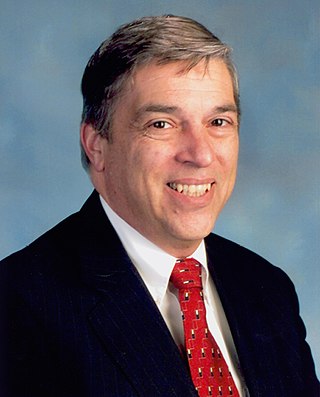
Robert Philip Hanssen was an American Federal Bureau of Investigation (FBI) agent who spied for Soviet and Russian intelligence services against the United States from 1979 to 2001. His espionage was described by the Department of Justice as "possibly the worst intelligence disaster in U.S. history".
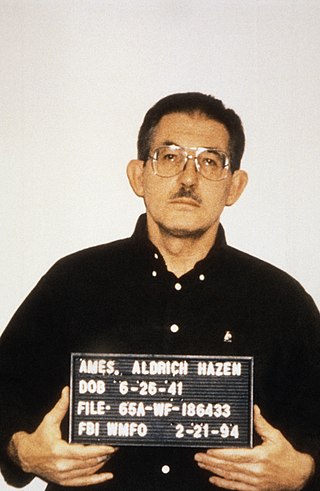
Aldrich Hazen Ames is an American former CIA counterintelligence officer who was convicted of espionage on behalf of the Soviet Union and Russia in 1994. He is serving a life sentence, without the possibility of parole, in the Federal Correctional Institution in Terre Haute, Indiana. Ames was known to have compromised more highly classified CIA assets than any other officer until Robert Hanssen, who was arrested seven years later in 2001.
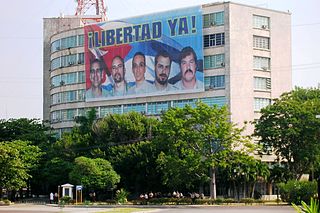
The Cuban Five, also known as the Miami Five, are five Cuban intelligence officers who were arrested in September 1998 and later convicted in Miami of conspiracy to commit espionage, conspiracy to commit murder, acting as an agent of a foreign government, and other illegal activities in the United States. The Five were in the United States to observe and infiltrate the Cuban-American groups Alpha 66, the F4 Commandos, the Cuban American National Foundation, and Brothers to the Rescue. They were part of La Red Avispa composed of at least 27 Cuban spies.

Karl František Koecher is a Czech mole known to have penetrated the CIA during the Cold War.
Larry Wu-tai Chin was a Chinese Communist spy who worked for the United States Government for 37 years (1944–1981), including positions at the U.S. Army and the CIA, while secretly being a mole for the Chinese Communist Party's intelligence apparatus from the very beginning. He kept passing classified documents and secret information to the People's Republic of China even after his retirement, until he was finally exposed in 1985.

Morris Cohen, also known by his alias Peter Kroger, was an American convicted of espionage for the Soviet Union. His wife Lona was also an agent. They became spies because of their communist beliefs.
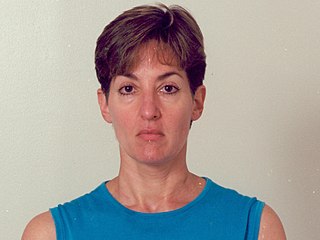
Ana Belén Montes is a former American senior analyst at the Defense Intelligence Agency in the United States who spied on behalf of the Cuban government for 17 years.
The American media referred to 1985 as the Year of the Spy because law enforcement arrested many foreign spies operating on American soil. However, the preceding year, 1984, actually had more arrests for espionage in the United States.

Walter Kendall Myers is a former U.S. State Department employee who, with his wife, Gwendolyn, was arrested and indicted on June 4, 2009, on charges of spying for Cuba for nearly 30 years. He was convicted of espionage and sentenced to life imprisonment by a U.S. federal court in July 2010.
Guillermo "Bill" Gaede is an Argentine engineer and programmer who is best known for Cold War industrial spying conducted while he worked at Advanced Micro Devices (AMD) and Intel Corporation (Intel). While at AMD, he provided the Cuban government with technical information from the semiconductor industry which the Cubans passed on to the Soviet bloc, primarily to the Soviet Union and East Germany. In 1992, Gaede turned himself over to the Central Intelligence Agency (CIA), which placed him in contact with the Federal Bureau of Investigation (FBI). The FBI began working with Gaede in a counter-espionage operation intended to penetrate Cuban intelligence using his contacts on the island. During this time Gaede obtained work at Intel Corp. in Chandler, Arizona. Intel Security discovered the nature of his activities at AMD and terminated him, but not before Gaede filmed Intel's state-of-the-art Pentium process from home.

Alan Phillip Gross is a former United States government contractor employed by the United States Agency for International Development (USAID).
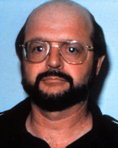
John Anthony Walker Jr. was a United States Navy chief warrant officer and communications specialist convicted of spying for the Soviet Union from 1967 to 1985 and sentenced to life in prison.

Glenn Duffie Shriver is an American convicted of conspiracy to commit espionage for China. At the behest of Chinese intelligence, Shriver unsuccessfully applied for jobs with the US State Department and CIA, meeting with handlers from China more than 20 times. He was first approached while living in China by operatives of the Shanghai State Security Bureau, a subsidiary of China's Ministry of State Security (MSS), who hoped to develop a mole which would provide them information regarding American foreign policy. He was caught and arrested by the FBI soon after applying to a job with the CIA's National Clandestine Service. In a 2010 plea bargain, he pled guilty to one count of conspiracy to commit unlawful conveyance of national defense information, and served four years in prison at the Federal Correctional Institution in Elkton, Ohio. He was released in 2013, and was later depicted in the short film Game of Pawns, commissioned by the FBI.
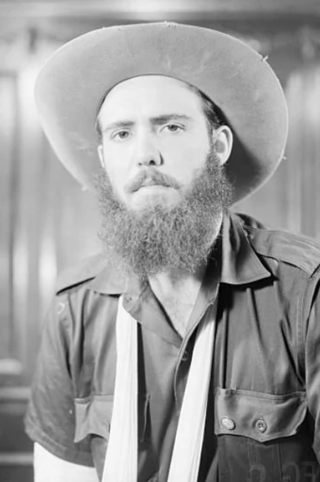
Rolando Cubela Secades was a Cuban revolutionary leader who played a vital part in the Cuban Revolution, having been a founding member of the Directorio Revolucionario Estudiantil and later the military leader of the DRE's Escambray Mountain front, achieving the rank of Commander, the highest military rank in the Revolutionary Army. After the Revolution succeeded in 1959, Cubela became Cuba's envoy to UNESCO. Under the cryptonym AM/LASH, Cubela became "an important asset" of the Central Intelligence Agency, and worked with them on plots to assassinate Fidel Castro. In 1966, Cubela was arrested for plotting the assassination of Castro, and sentenced to 25 years in prison. Released in 1979, he went into exile in Spain.
The following lists events that happened during 2014 in Cuba.
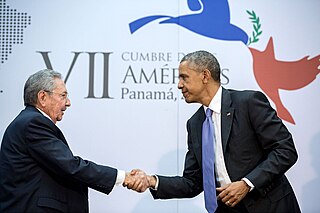
The Cuban thaw was the normalization of Cuba–United States relations that began in December 2014 ending a 54-year stretch of hostility between the nations. In March 2016, Barack Obama became the first U.S. president to visit Cuba since Calvin Coolidge in 1928. The normalization of relations between the United States and Cuba was relatively short lived, with much of the diplomatic progress that was made later being undone by the Trump administration.
The Sharon Scranage espionage scandal involved the passing of classified information from Sharon Scranage, a clerk with the Central Intelligence Agency, to Michael Soussoudis, an intelligence officer with the Ghanaian Provisional National Defence Council.
References
- 1 2 3 4 5 6 Mark Mazzetti, Michael S. Schmidt, Frances Robles (2014-12-18). "Crucial Spy in Cuba Paid a Heavy Cold War Price". New York Times . p. A1. Retrieved 2014-12-19.
He was, in many ways, a perfect spy — a man so important to Cuba's intelligence apparatus that the information he gave to the Central Intelligence Agency paid dividends long after Cuban authorities arrested him and threw him in prison for nearly two decades.
{{cite news}}: CS1 maint: multiple names: authors list (link) - 1 2 3 4 Jeff Stein (2014-12-17). "The American Spy Traded in the U.S.-Cuba Diplomatic Breakthrough". Newsweek magazine. Archived from the original on 2014-12-19.
The unidentified United States spy being swapped as part of a diplomatic breakthrough between the U.S. and Cuba is almost certainly a former cryptographer in Cuba's Directorate of Intelligence who worked secretly for the CIA until he was arrested on espionage charges in the mid-1990s, according to a former U.S. intelligence officer and other sources.
- ↑ Rosa Tania Valdés (2014-12-26). "Parents of Cuban who spied for U.S. say they only hope he's well". Reuters. Retrieved 2015-01-07.
- 1 2 3 Andrea Rodriguez (2014-12-19). "Spy's parents search for son after US-Cuba deal". Yahoo News. Archived from the original on 2014-12-19. Retrieved 2014-12-19.
- ↑ Muñoz, Carmen (22 December 2014). "Los padres de Sarraff, el supuesto topo de EE.UU. en Cuba, fueron alumnos del KGB". ABC. Retrieved 7 January 2015.
- ↑ Fernández Díaz, Miguel (6 January 2015). "El enigma Sarraff Trujillo: ¿relleno para el canje de espías?". Café Fuerte. Archived from the original on 7 January 2015. Retrieved 7 January 2015.
- 1 2 Glenn Garvin; Juan O. Tamayo; Patricia Mazzei (2015-01-01). "Spy wars: a wilderness of mirrors in U.S.-Cuba swap". Miami Herald. Retrieved 2015-01-07.
- ↑ Popkin, Jim (22 December 2014). "Two double agents, a prison swap and the code from outer space: did this spy-v-spy duel save US-Cuban relations?". Guardian. Retrieved 7 January 2015.
- 1 2 3 4 5 6 7 8 Jonathan S. Landay, "Swap of former Cuban intelligence agent at heart of U.S. deal", Seattle Times , 18 December 2014
- ↑ Stewart, Phil; Adams, Dave (19 December 2014). "Cuban relatives of U.S. spy in dark after news of release". Reuters. Retrieved 7 January 2015.
- ↑ Garvin, Glenn; Tamayo, Juan; Mazzei, Patricia (1 January 2015). "Spy wars: a wilderness of mirrors in U.S.-Cuba swap". Miami Herald. Retrieved 8 January 2015.
- ↑ "Miembros del Grupo de los 75 exigen la liberación de los demás presos políticos cubanos" (in Spanish). El Diario Exterior. Europa Press. 14 April 2011. Retrieved 8 January 2015.
- ↑ Sarraff Trujillo, Rolando (23 April 2014). "Carta Abierta del preso político cubano Rolando Sarraff Trujillo, desde la Cárcel de Villa Marista". Observatorio Cubano de Derechos Humanos. Retrieved 8 January 2015.
- ↑ "Freed Cuba spy now in the US and 'doing fine', says sister". The Guardian. 2015-01-13.